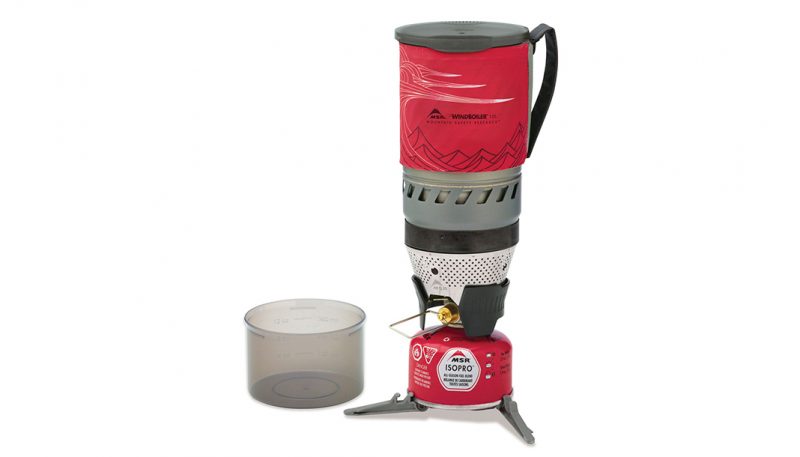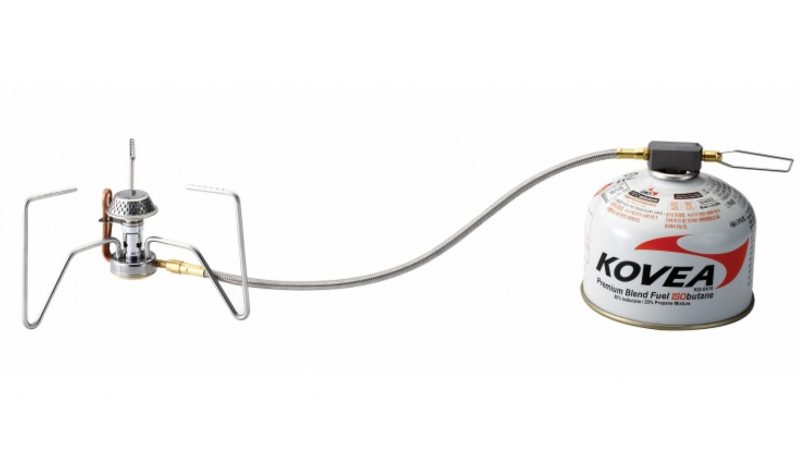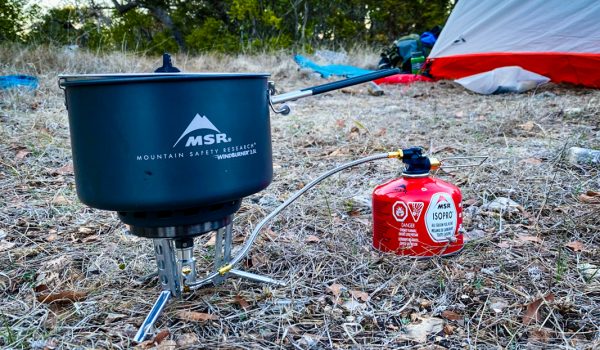This test blanketed a spectrum of products that all have at least a couple of justifiable reasons for being in your gear bin. However, when placed head-to-head, it becomes easier to see how a standout feature on one stove gets shadowed by something more useful on another. This is why there’s value in testing, as it allows consumers to compare the apples with the apples, it then simply comes down to which type of apple you prefer.
Weight
The lightest stove in this test is the Olicamp Ion Micro Titanium at 1.5 ounces. While not the best performing stove as result of its packability, it’s a stove we recommend highly for light-and-fast hikers, or bikepackers, just behind the Soto Windmaster.
In fact, it was clear that Olicamp made this stove to impress the growing crowds of people who prefer the trail more than camp. It’s also a durable little cooker as a direct result of its diminutive stature. It can fit into a mug, pot, pocket, or wherever you have an extra few cubic inches. The stove is a scant 1.5 inches wide when packed, and it’s only two inches tall. Obviously its titanium body and stainless steel pot supports contribute to its status as the flyweight class champ.
For comparison’s sake, the new, smaller Pocket Rocket 2 (now being tested) weighs 2.5 ounces. In this test, the second and third lightest gas canister stoves were SnowPeak’s LiteMax Titanium at 1.9 ounces and the GSI Outdoors Pinnacle stove at 2.5 ounces, respectively.
All of its components make the Primus Eta Spider the heaviest stove in this test. These are the toughest assignments to give because of the pejorative reaction “heavy” connotes in this product category. The Eta Spider is a super-practical stove that cooks well and beats wind. In short, don’t let weight factor “too much” in your decision to buy a canister stove.
Boil Time
The gas canister stove that boiled water the fastest in this test is the Jetboil MiniMo. The average time is gathered from boiling two cups of water ten times under the same conditions, and it did so in 1:51.
The Primus Eta Lite averaged 2:23 and the Primus Eta Spider and MSR Windburner each averaged 2:53.
The MiniMo’s fuel regulator, low wide pot design, and ubiquitous heat exchanger all helped all helped it win this category. The stove is also benefited by its short stance.
Even though a number of stove brands have come to lament the popularity of this metric and the race to 2:00 it has created, there is some justification for wanting a stove to heat water sooner than later.
Backcountry cold injuries could be prevented or reduced in severity by re-warming body parts in warm water. (Always evacuate serious cold injuries.) The sooner you have the warm water, the better. The same goes for trying to beat the onset of bad weather. It’s never smart to cook inside a tent and sometimes vestibules are packed with wet gear, so you have no choice but to wet out and wait for the water to boil. In those cases, I want my meal rehydrated as quickly as possible.
Oh, and lest we forget the pain of an alpine start. If there’s no time for coffee, even a cup of hot water helps get up and get after the summit.
I don’t believe there’s any merit to the idea that a fast boil contributes to an easier trip or more miles, or that it makes one stove worth buying more than another unless the above situations apply. In fact, the real benefit to the heat-exchanger revolution is the wind resistance and subsequent fuel efficiency.
The majority of tests used two cups of water, or 16 ounces. The test for the MSR Reactor, probably most folks’ expected winner, used 25 ounces of water, resulting in an average boil time of 2:53. The testing discrepancy was due to the timeframe between tests, as we set the the two-cup benchmark across all tests well after the Reactor was tested.
Wind Resistance
There are few things more frustrating than waiting for your meal to cook, and wind is often the reason why we sit around staring at a slow-heating pot of food.
The stove that will frustrate you the least then, is the MSR Reactor. The convex, radiant-heat burner head rests snugly within the concave base of the double-walled pot, preventing any of its heat from escaping outside the pot walls. The stove also runs entirely on primary air, meaning it doesn’t to expose its burner to surrounding air currents to keep the flame alive, which is required of all other canister stoves.
The Jetboil MiniMo was the next best performer in wind, followed by the Primus Eta Lite. The latter’s burner head is enveloped by a depression in the heat-exchanger pot base, creating a highly wind-protected environment for the flame. It’s a sharp design.
There is real value to protecting a flame from the breezes wafting through camp. For example, wind reduces conductive heat by cooling the pot. It also cools the exterior of the canister, affecting internal pressure and thus, the flow of fuel. Wind also weakens the flame itself. As a result of all of the above, you use more fuel to reach appropriate cooking and serving temperatures.
Wind resistance was tested in natural situations out in windy deserts, on Sierra Nevada peaks, in developed campgrounds and during windy days in the frontcountry. In some cases a small fan was pitched in front of a stove. The same fan was used in each test and placed the same distance from the flame.
Cooking
The buying market has become so enamored with lighter and faster that it seems a stove’s primary purpose — to make us food — has become secondary. We don’t think that should be so, and test our stoves accordingly.
The Jetboil MiniMo and Primus Eta Spider rule this roost because of their highly controllable flames, practical native pot sizes and wind protection. Both stoves are also very stable with heavy pots and pans, essential for small or compromised camp kitchens.
The GSI Outdoors Pinnacle 4-Season stove, a remote burner, is also a solid cooker, performing almost as well without a fuel regulator thanks to super-precise valve control. GSI also innovated a very cool windscreen setup that keeps heat away from the canister while fully protecting the burner. The MSR WindPro II, Kovea Spider and SnowPeak GeoShield all scored an 8 out of 10 in our Cooking ratings.
Efficiency
The Primus Eta Lite boiled 23 two-cup pots of water on a single 100-gram canister of MSR IsoPro isobutane, making it the most miserly of the bunch. Jetboil’s Flash was a close second, boiling 21 two-cup pots.
Testing for efficiency helps stove shoppers understand how much fuel (roughly) they need to carry on a specific trip. Air temperature, wind, altitude, menu options, and a number of other factors influence how well a stove performs throughout the length of a trip, and those factors are different and unpredictable every time we venture out. Our tests are designed to give readers a benchmark of performance in as realistic a setting as possible.
Efficiency is typically measured alongside the boil test. How much fuel did a stove require to boil 10 pots of water?
Fuel efficiency is also determined by stove design, and is what drives the heat exchanger sub-category of gas canister stoves. Windscreens and burner design also influence fuel efficiency, and therefore there’s an array of engineering methods deployed to remedy wind’s impact on how much fuel is needed to boil a cup of water.
The engineer pedigrees behind Jetboil, MSR and Primus stoves will keep their products at the top of this list. However, GSI Outdoors, an upstart in the stove market, has approached the efficiency mission with different tactics. They offer a separate aluminum windscreen that rests on small prongs cut from the base of the pot supports on both the Pinnacle and the Pinnacle 4-season remote canister stove. The prototype windscreens tested were a bit clunky to install, but changes have been made since testing to streamline the concept for market. It’s a very cool approach worth consideration from budget-minded stove shopper.
The Primus Eta Spider, MSR WindPro II, Kovea Spider and yes — the OliCamp Ion Micro Titanium — also scored high marks for preserving fuel.
Other Factors
Testing parameters changed over time. We once ranked “durability,” but realized that it’s a characteristic too difficult to judge, and one that can be summarized in the overall impressions and description of features. Engineers or manufacturing reps will be contacted when a stove component is notably weak or if a clear malfunction arises. In the essence of sound journalism, we need to know if the flaw has been discovered already or if we received a prototype not yet ready for the retail shelf.
That said, if a stove won’t hold up to hard use, we’ll share that with you; the SnowPeak GeoShield, for example. The concept is pretty slick. However, it’s ultimately over-designed, stressing gimmick over practicality.
On the contrary, the GSI Outdoors family of gas canister stoves were a good example of how communicating with a stove’s designer can pay off. My concerns about the windscreen attachment designs were acknowledged by the company honestly and a fix was already in the works. They’re nice stoves, too.
Jetboil acknowledged design flaws in the prototypes of its gas canister upright, the MightyMo. The rivets chosen to fasten and rotate the pot supports made them very difficult to open and close without unusual force. I warped the supports on two prototypes in early testing after minimal use. The issues have since been resolved.
Reliability was an early synonym for durability and has since been eliminated from testing standards, as has Value, which we determined was a ratio of price against overall quality.
Review Conclusions
The difficult truth learned during testing so many gas canister stove products is that not one company tested is making a “bad” product. Some stoves are better at one thing than another, and some stoves may win over a buyer on brand name alone. When the dust settles, we’re not looking at any losers, just products that didn’t win.
That conclusion isn’t a participation-trophy cop-out or wink to curry favor with reps and respected brands, it’s merely a case of the industry evolution.
Manufacturers work one-on-one with professionals in the field to invent, develop and test products. The line between experienced user feedback and the factory is short and straight. Materials are better, research is better and consumer trends are more accurately measured.
That said, manufacturers are cranking out designs faster than stove buyers can invent a reason to use them. This is resulting in redundancy, and it’s burdening buyers and retailers with an abundance of choices. Jetboil is a prominent example, and I’m not surprised they need a Buying Guide on their website. MSR is moving quickly to proliferate its WindBurner tech across a number of cooking products. I hope a similar challenge doesn’t emerge for their customers.
Overall, we’re in a golden age of cooking technology, and frankly, major credit has to given to the aforementioned Jetboil for advancing and encouraging backcountry cooking innovation. The original PCS changed the game a little over 10 years ago, or at least demonstrated a new to way to look at stove design. The rise of heat exchangers and rapid boiling pushed Mountain Safety Research to new levels of invention and lured giant camping OEMs like Kovea into the American mass-retail spotlight.
The category-leading stoves in our test are not easily chosen, and admittedly, there’s always slight tinge of subjectivity involved. On occasion, a stove just “feels better” to use. We’ll continue to work to ensure those feelings are kept at a minimum, or altogether eliminated.
Test Methods
Testing is done under actual wilderness conditions at every opportunity. In instances where conditions don’t allow for prolonged exposure or are in some way not ideal for testing, every effort is made to emulate backcountry environments.
Boil time is tested using the same volume of water for each stove from the same source, in the same pot. Every effort is made to use the same type of fuel, as well, provided manufacturer recommendations aren’t overly dire about the risks of not doing so. An electronic timer is started when a pot is placed on an ignited burner and turned off upon a rolling boil. This is done 10 times, with usually 3:00 of rest between boils and the results are averaged.
Fuel efficiency is tested by measuring gas canister volume before and after the boil test.
A separate five-boil cycle is used to test wind tolerance. This will be done in actual wind when conditions permit or replicated using a small fan placed a few inches from the stove.
Cooking ratings are measured over time using a number of common backcountry foods, such as soups, pastas, powdered eggs, vegetables and occasionally fish. This test is naturally somewhat subjective but is monitored for how well a stove maintains a consistent simmer, controls its flame, and avoids burning. If a stove is packaged with a pot, only that product will be used. When that is not the case, every attempt is made to use the same pot to compare stoves.
Lastly, weight is pitted against factory advertised weights using a digital postage scale. The stove is weighed with all components required for it to function at its peak. Thus, a stuff sack is not considered a factor for weight, nor are included stand-alone ignitors, as a multitude of alternatives can be used to ignite a stove.
What Is A Gas Canister Stove?
Gas canister stoves are typically designed for multi-day travel in the wilderness. They come in array of form factors with different takes on common features. What they all have in common is their source of fuel: canisters of isobutane or isobutane/propane gas mixes.
The most traditional design is the screw-on, upright canister stove. A few typical examples of this include the MSR Pocket Rocket, SnowPeak GigaMax and Soto WindMaster. These are common among solo backpackers and first-timers because of their shortage of components, ease of use and wide availability.
Canister stoves also exist as remote systems. These are handy inventions that use a fuel line to connect the gas to the burner. As a result, the stove is commonly housed in a separate base that allows it sit low to the ground and maintain stability when cooking with larger pots and pans. You can also use windscreens with remote canister stoves.
Many remote canister stoves come with a rotating valve housing that enables users to flip the canister so that direct liquid fuel feeds the flame. This is handy in situations where the canister pressure is low or you need to cook quickly.
Heat exchanger systems, or “all-in-ones,” are those gas canister stoves that come with their own pot designed specifically to work in unison with the burner to achieve top performance. The Jetboil brought this design to the masses and is considered the benchmark from a consumer standpoint. The brand is the “Kleenex” or “Xerox machine” of backpacking stoves. The Primus Eta Lite, MSR Windburner and Kovea Alpine Pot are other such examples.
Know that despite every tactic deployed, gas canister stoves are still not ideal for consistently cold conditions. Keeping them physically warm in a sleeping bag or wrapped in a sock is a must when temps get uncomfortably low. Four-season canister fuels with an extra boost of propane help remedy this risk, but do not suitably alleviate it.
Expect to spend anywhere from $25 to $150 for stoves in this category. The most affordable will be the upright screw-on options while the multi-component systems will run at the high end. The Primus Eta Spider, MSR Reactor and Jetboil MiniMo are some of the pricier models available.
Stove buyers can expect the category leaders Jetboil and MSR to continue to focus on different iterations of their current burner tech. Given current model options, a pure liquid fuel stove wouldn’t be out of the question for Jetboil soon. Small and light will continue to be important to buyers, and I hope the divide between products for those buyers and traditional backcountry chefs becomes more evident to alleviate flooding the market with redundant products.
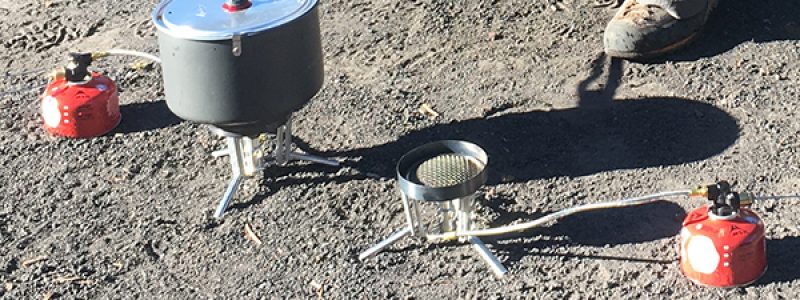









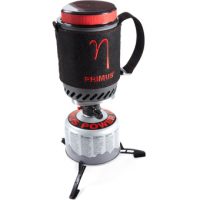
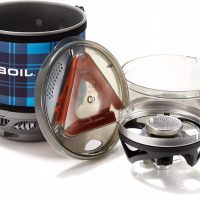
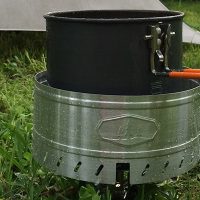

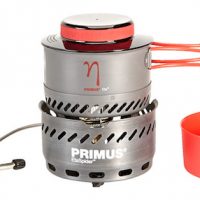

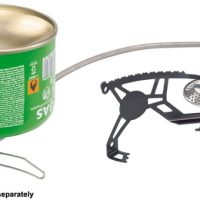

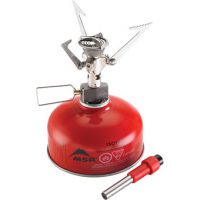


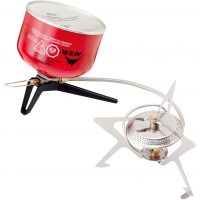

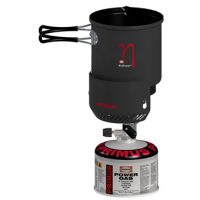
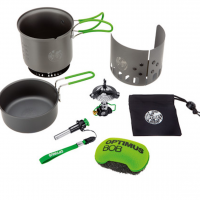
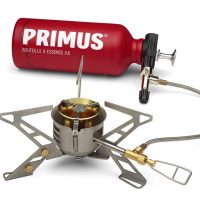
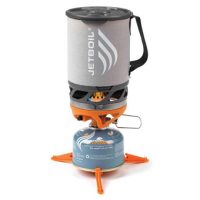
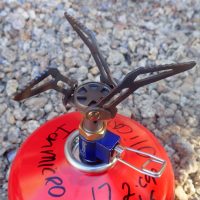
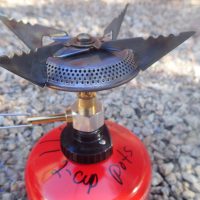
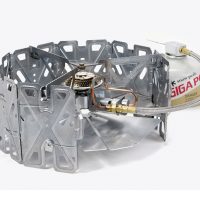
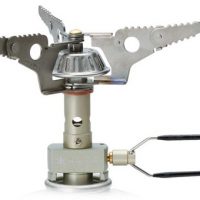
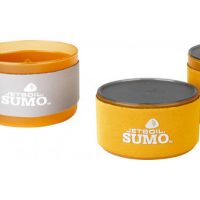
 92
92 